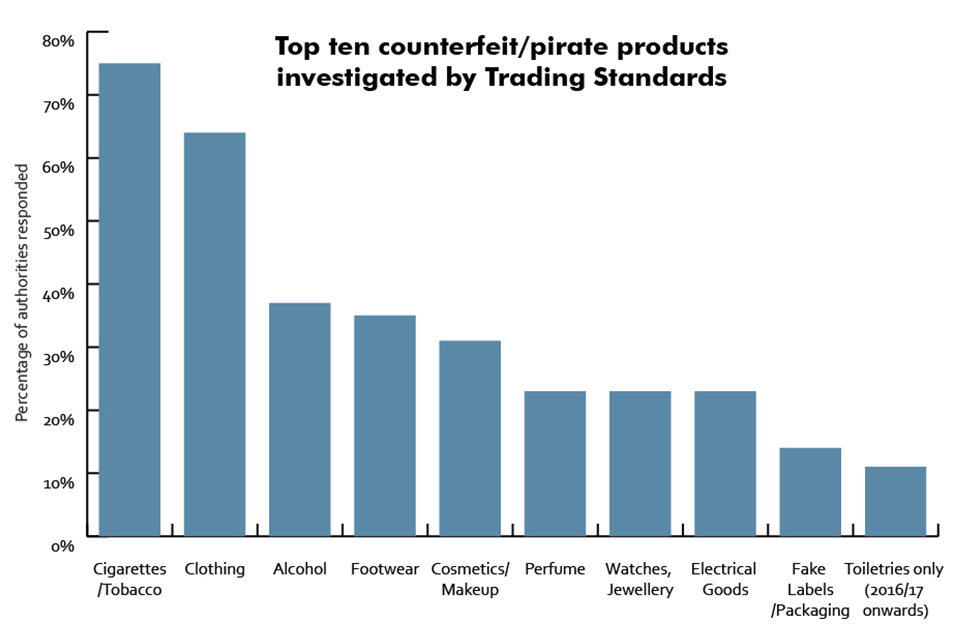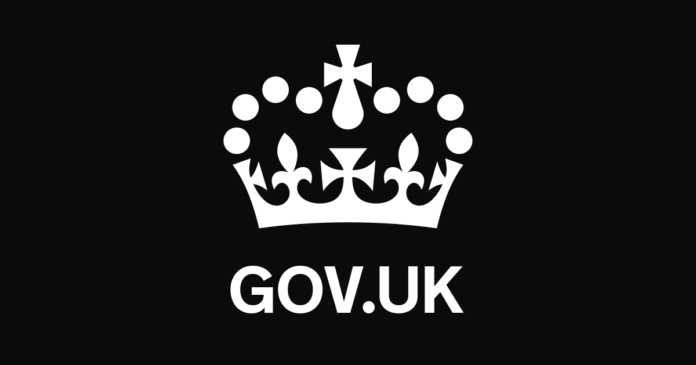1: The IP Crime Group
The UK IP Crime Group began its work in 2004. Its brief was clear – to act as a forum for all stakeholders in the IP crime and enforcement environment and as a platform from which policies and action could be launched.
Since its inception, the group’s membership has been diverse and inclusive. Private sector specialists, law enforcement authorities, legal specialists, trade representatives, brand owners and government departments working together to form productive partnerships. IP Crime Group members tackle IP crime and infringement in the UK and at an international level.
Group members and invited organisations play an important role in providing contributions for the annual IP Crime and Enforcement Report. The report is published in September jointly by the Intellectual Property Office and the Group.
This year’s report draws together the experiences of the key stakeholders in the IP crime prevention landscape. It captures a unique snapshot of the nature of IP crime in the UK. This year’s reporting period also saw the unprecedent challenges brought on by COVID-19.
2: The scale of IP crime
Recent reports from the OECD indicate that trade in fake goods continues to increase from an already high level of 3.3% of world trade in 2016. [footnote 1]
In March 2021 the 10th wave of the Online Copyright Infringement Tracker reported a 23% infringement rate. Although this figure is 2% lower than the previous year, it still represents a threat to our creative industries and an unacceptable level of IP ‘crime ambivalence’ on the behalf of UK consumers. [footnote 2]
In July 2020 the first of a series of reports into trade in counterfeit ‘physical’ goods was launched. The findings of the 2020 IPO Counterfeit Goods Research chime with our understanding of online copyright fraud.
Consumers (especially young ones, who often support new markets and drive innovation) knowingly purchase counterfeit goods. A little over 30% of British consumers aged between 18 and 34 purchased counterfeit goods during the reporting period.
The report states: ‘Younger respondents (i.e. 35 and under) were more likely to purchase counterfeit goods and should be a key target audience for any activities aimed at reducing their purchase.’
It adds: ‘Encouragingly, there was a large proportion of people saying they would be likely to stop purchasing counterfeits if exposed to campaigns explaining the significant consequences of counterfeits. With those who were not persuaded, more research and co-creation could help to better understand what may change their minds.’ [footnote 3]
3: Where IP crime happens
Nationally: Ministry of Justice IP crime statistics
According to the Ministry of Justice, 180 people were found guilty of offences under the Trade Marks Act (TMA) and one under the Copyright, Designs and Patents Act 1988 (CDPA) during 2020, compared with 401 and 23 in the previous year.
| 2016 | 2017 | 2018 | 2019 | 2020 | |
|---|---|---|---|---|---|
| TMA Found Guilty | 443 | 398 | 461 | 401 | 180 |
| CDPA Found Guilty | 47 | 47 | 25 | 23 | 1 |
The dramatic fall in successful prosecutions under both the Trade Marks Act and the Copyright Designs and Patents Act must be understood in context.
Covid-19 reduced our capacity to mount efficient operations. Perhaps more importantly, bottlenecks in processing legal proceedings are only now being unblocked.
Regionally:
The IP crime hot spot map developed by the IPO’s Intelligence Hub identifies the geographical spread of IP crime reported to them.
Hot spot mapping – Intelligence Submissions
The map identifies areas of the UK where IP crime has been reported for the past two years (April 2019-March 2021). The hub continues to support several ongoing investigations of organised crime groups with a presence spread over several locations.
Year-on-year comparisons shows an overall 4% increase in the number of intelligence submissions.
Locally:
Trading Standards authorities throughout the UK are engaged with the prevention of IP crime through detection and prosecution work. Reports from Trading Standards authorities characterise the nature of IP crime in local authority areas.


Online:
NOMINET administrates the .UK domain. 22,158 domains were suspended for criminal activity between 1 November 2019 and 31 October 2020.
In tandem with the Police IP Crime Unit (PIPCU), NOMINET will redirect web-users who land on suspended domains to a secure site providing information on IP crime prevention. This is the first registry-led initiative to provide informative landing pages.
Nominet suspends the domains following notification from various law enforcement agencies including:
- Counter Terrorism Internet Referral Unit (CTIRU)
- Environment Agency
- Financial Conduct Authority (FCA)
- Medicines and Healthcare Products Regulatory Agency (MHRA)
- Metropolitan Police – Central Specialist Crime
- Ministry of Defence
- Police National Crime Agency (NCA)
- National Food Crime Unit (NFCU)
- National Fraud Intelligence Bureau (NFIB)
- Office of Communications (Ofcom)
- Police Intellectual Property Crime Unit (PIPCU)
- Trading Standards
- Veterinary Medicines Directorate (VMD)
4: Who commits IP crime?
Although the numbers of people knowingly taking part in online copyright crime fell this year to 23% of purchasers. This statistic still represents a startling high proportion of the UK purchasing public.
The remaining 77% of us, who seek out authentic products from reputable sources online and offline, remain susceptible to counterfeit and fraud [footnote 4]. The IPO’s most recent research into counterfeit goods paints a similar picture.[footnote 5]
The IPO’s reports on online copyright and counterfeit goods infringement explore the relationships and linkages between three groups: ‘disruptive’ shoppers [i.e. those who deliberately seek copyright infringing and counterfeit products]; ‘deceived’ shoppers [those who unwittingly purchase those products through deception] and IP crime perpetrators [those who provide counterfeit and copyright infringing products].
They expose the breadth of IP crime, from illegal tobacco sales in corner shops, to illegal streaming at home, to the construction of complex equipment and its routing across global supply chains by organised, international criminal networks.
They also illustrate a fundamental characteristic of the IP crime; there is one kind of criminal, but there are two kinds of consumers. Those who may be deceived who require protection (especially in respect of dangerous products as Electricity Safety First point out) and those who knowingly support counterfeiters.
The question as to how best to change the behaviour of this group is fast becoming a policy priority.
5: Tackling IP Crime
The IP Crime Group brings together an alliance of stakeholders comprising national and local government agencies, national and international IP crime prevention bodies, public and private crime prevention specialists, trade and consumer protection organisations, IP owners, the legal community and policy makers. All of these partners are committed to the reduction of IP crime online, in physical markets and through supply chains.
The enforcement work detailed in this year’s report highlights thousands of online suspensions, complex police, Trading Standards and Border Force operations, case work against individual criminals, prosecutions, engagement and educational work and international liaison with partners across the globe.
Many of the most productive interventions developed and highlighted in this report are collaborations between private and public interest groups with overlapping agendas and a common objective – tackle IP crime.
A new member of the IP Crime Group has been created. North West Police Intellectual Property Crime Unit (PIPCU) is now live. PIPCU are continuously engaging and supporting Group members and have been working collaboratively on investigations. The NW PIPCU has already seized £1.7m worth of fake goods including clothes, electricals and fireworks. The unit has ongoing investigations with an estimated potential loss to industry of £2.3m.
6: Policy
A fundamental objective of this report is to characterise a form of crime that threatens the economic health of the UK, compromising consumer safety and undermining public confidence in markets.
Our findings feed into the development of IP crime prevention policy so that interventions can be developed, coordinated and deployed.
The first findings of the IPO’s research into trade in counterfeit goods published in July 2020, mark an important improvement in the quality of data available to policy makers. Evidence gained from the IPO’s research into and that conducted by the members of this group provides an essential database for policy development.
The submissions from IP Group members this year suggest a shift in IP crime online. Similarly, our consumer facing members and organisations with a strong remit for the protection of consumers all shifted their communications online.
Developing strategies and policies that work online and offline has become a priority for our communicators and our specialists in crime prevention at an operational level.
7: Consumer behaviour
The authors of the Online Copyright Infringement Tracker Survey make clear recommendations:
What became overwhelmingly apparent through feedback from respondents was that, no matter which category the messages fell into, focussing on the story of an individual was the most effective way of encouraging acts of self-reflection and potential behaviour change.
Messages about the consequences to industries, big corporations or the economy failed to garner much empathy across the board whilst messages relating to Covid-19 were seen as potentially insensitive and only temporary in effect, given that lockdown would eventually end thus making them difficult to relate to.[footnote 6]
Changing consumer attitudes to IP crime remains an imperative. Disruptive shoppers, aware that they are buying rip-offs, account for over half of the destinations for counterfeit goods entering the UK, according to the OECD/IPO.[footnote 7]
At the moment a little over a fifth of all British consumers are prepared to countenance a high level of IP crime. Both of these figures must be reduced through a combination of deterrence, as a result of successful law enforcement actions, and through increasingly effective public relations pioneered by public facing members of our group.
8: Contributors to this year’s report
- Anti-Counterfeit Forum (ACF)
- Anti-Counterfeiting Group (ACG)
- Crown Prosecution Services (CPS)
- Electrical Safety First (ESF)
- FACT
- Industry Trust
- Intellectual Property Office (IPO)
- UK Intellectual Property Online Protection Group (IPOP)
- National Markets Group for IP Protection
- National Trading Standards (NTS)
- Nominet
- Police Intellectual Property Crime Unit (PIPCU)
- Premier League
- Professional Publishers Association (PPA)
- PRS for Music
- React
- Real Deal
- SnapDragon IP
- TM Eye
- Trademark and Rights Holders Against Piracy (TRAP)
- Trading Standards Local Authorities
- Transnational Alliance to Combat Illicit Trade (TRACIT)
and American Apparel & Footwear Association (AAFA) - UK Interactive Entertainment (Ukie)
9: Further information
Information about the IP Crime Group including useful IP enforcement contacts is available.
Research:
Disclaimer:
The findings, facts and opinions in the IP Crime and Enforcement Report are those of the IP Crime Group members and not necessarily the views of the IPO or the Government.
The data in the Report has not been substantiated by the IPO.
Credit: Source link











